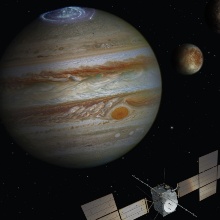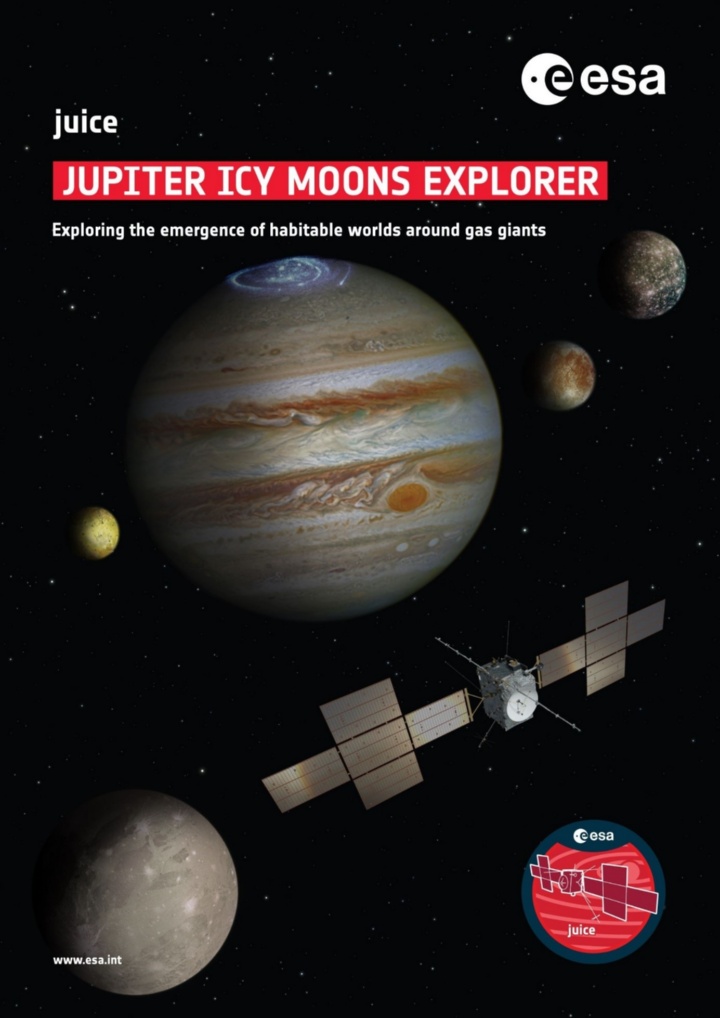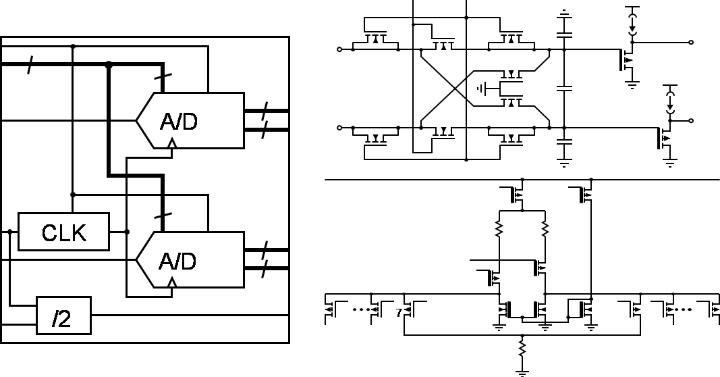On Friday, April 14, 2023, at 2:14 pm, an Ariane 5 rocket will carry ESA’s JUpiter ICy Moons Explorer (JUICE) from the spaceport in French Guiana to space. The first launch attempt, initially planned for Thursday, April 13, had to be postponed because of bad weather conditions. After a long journey, JUICE will investigate in 2031 the giant Jupiter and his icy moons Ganymed, Callisto and Europa, where oceans of liquid water take cover under thick layers of ice.
One of the ten state of the art scientific instruments on board of the explorer is the so-called Submillimetre Wave Instrument (SWI) of the Max-Planck-Institut für Sonnensystemforschung. The Institute for Electrical and Optical Communications Engineering (INT) of Universität Stuttgart has designed a radiation-hard analog-to-digital converter, which is a central part of a baseband receiver of a chirp-transform spectrometer. With this spectrometer the SWI will analyze the Galilean moons and Jupiter´s atmosphere and deliver data for the exploration of possible habitable areas on Ganymed, Callisto and Europa. The launch of the rocket can be followed via live stream from ESA.
A key challenge in the design of the converter was the hard radiation that is present in the vicinity of Jupiter and that will impact the delicate electronic circuits. When high-energy radiation hits the integrated circuits, electron-hole-pairs are generated and cause the logic states (“zeroes” and ones”) in the circuit to skip. This means, the circuit delivers a wrong information. The radiation even can cause a short circuit by the so called latch-up effect: a parasitic thyristor is triggered. This results in a complete failure of the instrument. By using special circuit topologies and designing an appropriate mask layout, we could make the analog- to-digital-converter more robust against the impact of radiation in space.
| Contact | Dr. Markus Grözing, Institute of Electrical and Optical Communications Engineering, University of Stuttgart, e-mail |
|---|




